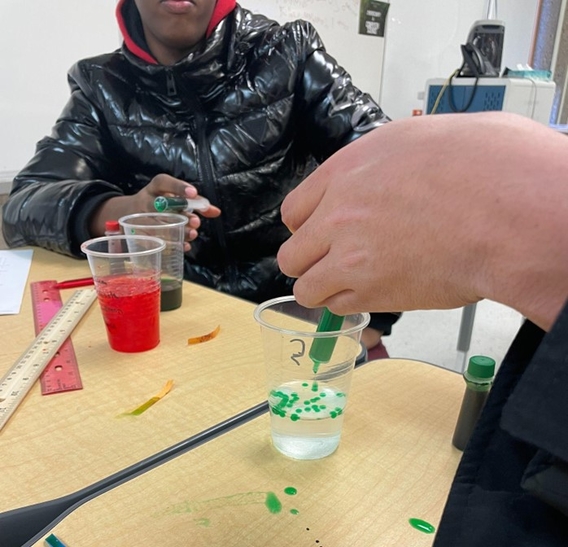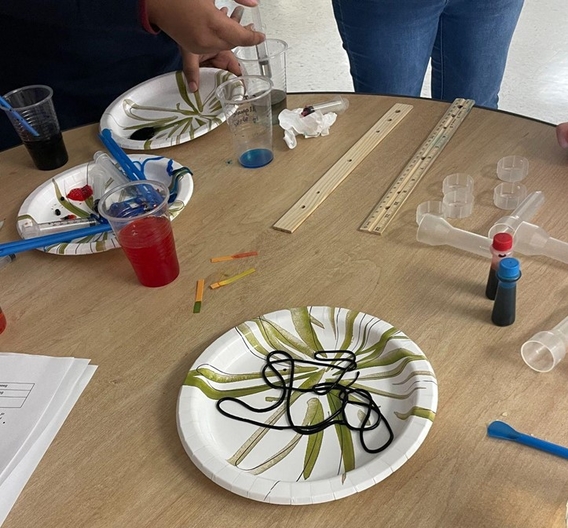November 2023 Visit
Experiment Leads: Zach Gdowski and Joanna White
In November, the Science for All (SFA) team traveled to Heritage STEM Academy to work with the ninth grade class. Zach Gdowski and Joanna White first led the students through a short presentation, discussing concepts such as electrons, ionic bonding, and pH. They then introduced a material called sodium alginate – a large macromolecule that is derived from seaweed. Showing the chemical structure, they explained that each molecule consists of a long chain with negative charges along the backbone. When paired with a monovalent element (one + per atom), such as sodium, the chains dissolve in water and form a liquid solution. In contrast, divalent elements, such as calcium, have a 2+ charge and therefore can connect to two different positions on the alginate chains. They suggested that having these two connections causes the liquids to turn into gels.

The students then broke up into pairs and spread to stations manned with 1-2 graduate students. The students used pipettes to add a colored sodium alginate solution dropwise into calcium chloride in water. They were excited to see that the drops immediately formed into spherical beads. They experimented with isolating the beads, squishing them between their fingers, and measuring an average radius of the beads. As many of the students hypothesized, dissolving the sodium alginate in lemon juice resulted in poor bead formation due to the lower pH of the solution which disrupts the ionic crosslinking. After making beads, the students initiated a competition on which team could make the longest jelly “worm.” They excitedly experimented with different techniques to dispense the sodium alginate into the calcium chloride to change the dimensions of the resulting gel.
